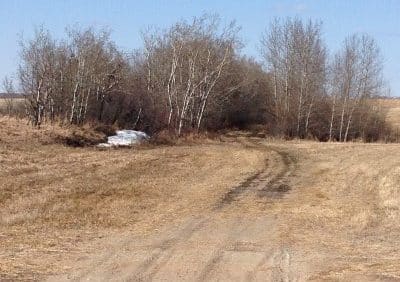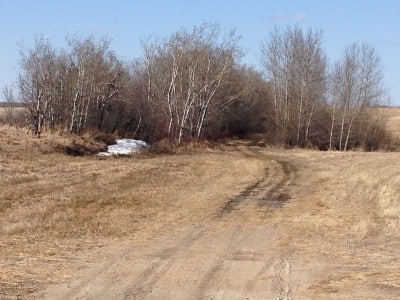Early seeding usually improves canola yield potential and quality, in large part because earlier crops tend to flower before the hottest days of summer. But the yield benefits of early seeding depend on survival of a sufficient plant population — ideally 7 to 10 plants per square foot, and a minimum 5. An early-seeded crop that is thin and uneven because of frost, for example, will not meet yield and quality expectations.
Typically, the maximum yield benefit comes when canola is seeded in late April to mid May and gets up and growing fairly quickly. The exact window depends on the region and the season.
Before making the decision to seed earlier than usual, consider:
Typical date of last killing spring frost. Canola seedlings can typically withstand some light frost (e.g. -2 C to -6 C) without significant mortality, but crop development may be delayed in those situations. Higher mortality occurs when the frost happens the morning after warm to hot spring days. Average date of last spring frost.
Soil temperature. Although 20 C is the optimal soil temperature for canola to germinate quickly and evenly, 10 C is a reasonable soil temperature to seed canola, and the general recommendation is that 5 C is a good place to start. Weather forecasts for the week after seeding will help indicate whether the seedbed will be warming or cooling during germination. Canola can germinate at soil temperatures of 2 C, but seeding into soils that are too cool can add significant stress to seedlings, extend the germination period, reduce seedling survival, and limit the protection from seed treatment once the plants have finally emerged. Determine average soil temperature by taking readings at 2.5 cm (1”) depth at 8:00 am and 4:00 pm over several days. See a video on how to take a soil temperature reading. Find Alberta soil temperature information here. Click on the “Elements” tab then check the soil temperature box. Find Manitoba soil temperature information here. We have not found a link to Saskatchewan soil temperature reports.
Soil type. Making use of available spring moisture may be more critical on coarse textured soils with less water holding capacity. Potential for compaction from heavy rains following seeding, which can increase stress on seedlings emerging in cool conditions, is lower on sandier soils.
Seed treatment. Seed that takes 2-3 weeks to emerge may not have much seed treatment protection left, so scout often for flea beetles.
Seed placement. Seeding at a consistent and shallow depth with reduce the days to emergence.
Seeding rate. Set a seeding rate that targets higher plant densities, perhaps 10 per square foot, if seeding very early. This cushions the impact of spring frost or diseases by allowing some plant mortality without an immediate effect on yield potential.
Weed control opportunity. Rather than seeding too early, this might be a better time to control weeds. University of Saskatchewan research has shown that early application of preseed herbicide treatments provide greater yield benefits for later seeded crops than waiting until immediately prior to seeding.


